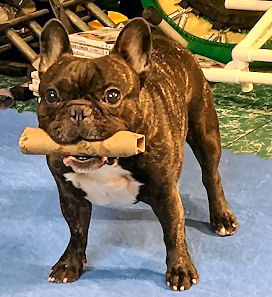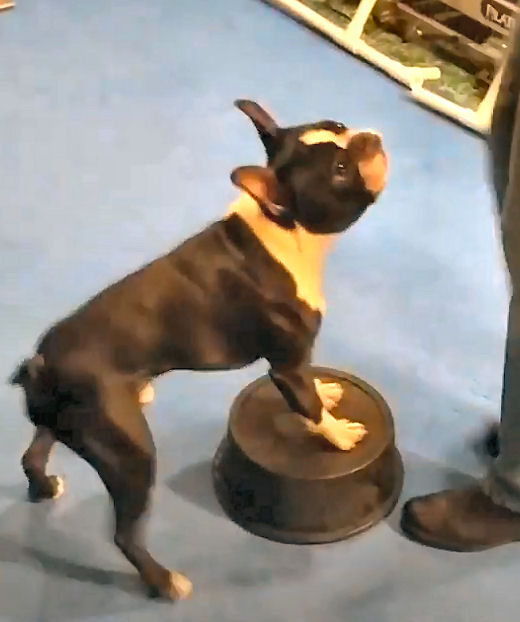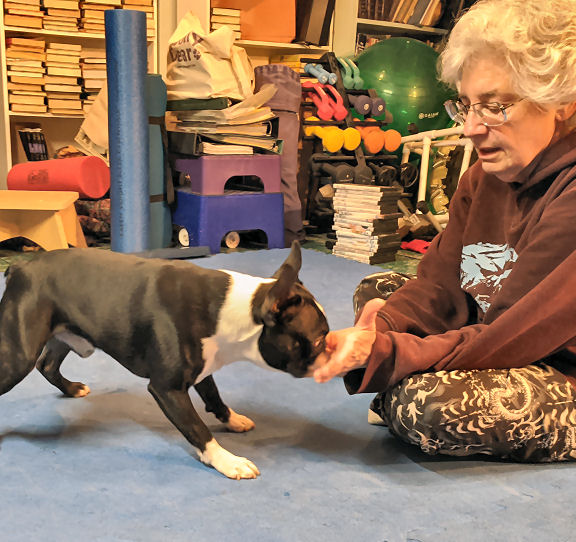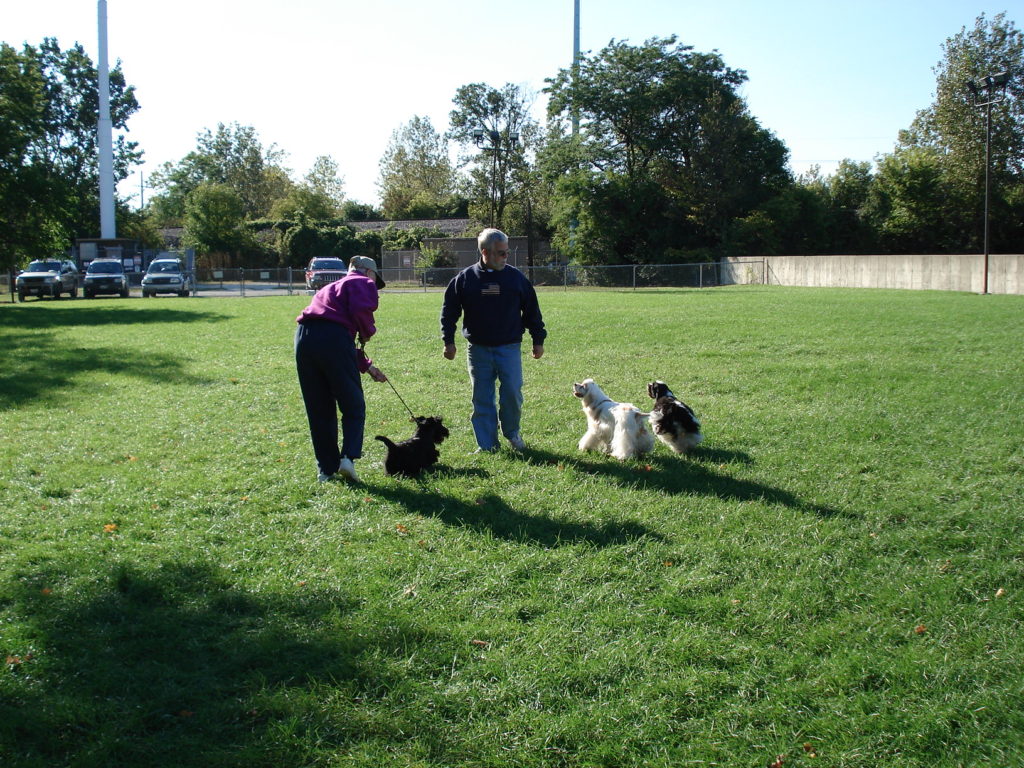There is no “one size fits all” to dog training. Your first attempt at training a new behavior may work, but dog training needs a “Plan B.”
One of the nifty things about dog training is that you can see it working. You can see the dog thinking, trying to solve the puzzle. And they love the process of problem-solving. Dogs trained with games are always happy to try. But what if the dog can’t do it? It’s time to present the question in a different way.
Dog Training Plan A
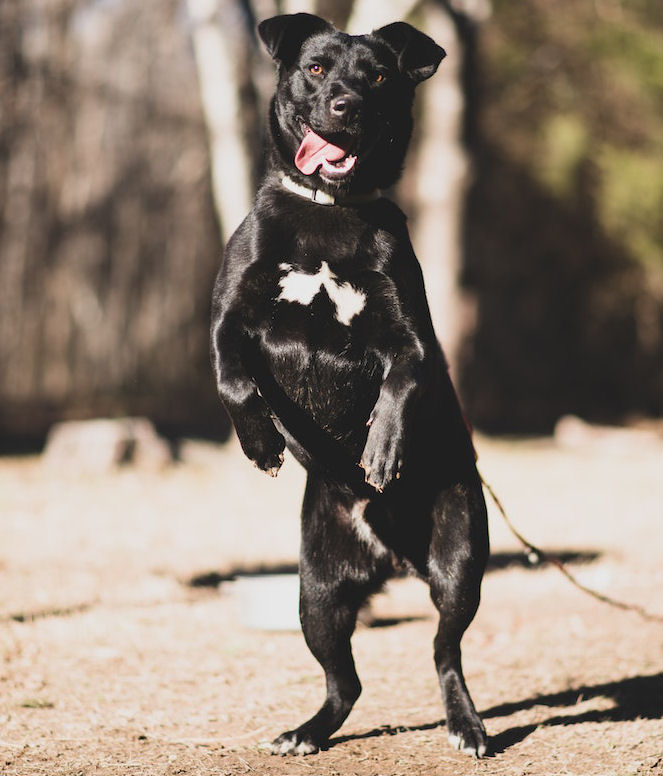
We were visiting with family this past week and got to meet their 10-month-old Black Lab mix puppy. Cagney is a really nice puppy. He gets along with their 14-year-old Pom mix, their small children, and is a happy, friendly pup. Who jumps to say hi. And to steal stuff off the counters.
When we came in, Cagney greeted us by jumping up. He’s a tall boy – his front paws were easily able to rest on our shoulders. An exuberant, but rude, greeting
And, like almost every puppy owner out there, our cousin reached for Cagney’s collar, pulled him away, and said “No jumping.” Needless to say, as soon as she released the collar, he was jumping again.
When asked, our cousin gave us the go-ahead to try something else. So we started the tried-and-true method of turning our backs on Cagney. He loved the game. He just followed us around in circles to jump some more. Apparently, there’s a lot of spinning in circles with little kids around. Cagney had fun, but it didn’t work as a “stop jumping” game.
Shifting to a new plan
Dogs always follow the path that’s most rewarding for them. Cagney’s goal was to get our attention. And, from his perspective, he succeeded. His jumping has always gotten him attention – either from the person he was jumping on, or from his people getting hold of him. Either way, his goal was met.
We had to shift his thinking. Another way of stopping a dog’s attention-grabbing behavior is just to leave the vicinity. Walking away from the dog takes away the game and usually stops it cold. But Cagney is, once again, accustomed to the behavior of small children, who constantly run around. That method wouldn’t work with him.
The response to Cagney’s jumping is to stop everything. Movement, conversation, looking, grabbing, everything. We folded our arms and stared at the ceiling. Cagney didn’t understand at first, pawing at our arms, and jumping. This is where the hardest part of dog training comes in. We just stood there, silently. In just a few moments, Cagney’s puzzlement (or frustration), caused him to just sit. And he was immediately praised, rewarded, petted, and fussed over. He attempted to jump. Arms folded, eyes on the ceiling. He sat again. Praise, pets, and treats.
Not a doggy genius
And just like that, with only a couple of repetitions, Cagney got the idea. There were a couple of times over the next few hours that he forgot himself and jumped. But he learned just that fast – when he wanted our attention, he came over and sat. The “be patient and ignore” method also works with nuisance barking as a Plan A or a Plan B.
Is the jumping problem “solved?” No, not yet. It will take a while before the 10 months of jumping is overridden by the new sitting behavior. If our cousin doesn’t keep it up, it won’t last at all. And until it’s a habit to greet people by sitting, our cousin will have to get all visitors to “fold and stare.” And reward heavily every time he successfully sits instead of jumping.
Dogs learn by the timing and placement of rewards. When Cagney makes the right decision to sit, praise has to be almost instantaneous for him to make the connection. Puppies especially have a very short attention span, and if there’s a lag between behavior and praise, the link may not take.
Planning ahead
The reason we have a variety of games to play for almost every dog behavior is so we can adapt to the dogs we meet. What works for one dog, may not work for another. Just like people, they have different learning styles, different experiences, and different knowledge sets.
If the game you’re playing with your dog isn’t getting results, think about what’s going on, how the dog is reacting, and what you can do to change it. Just like when you’re talking with someone who isn’t understanding what you’re saying, find a different way to express it. There are lots of ways to do almost anything. The right one is the one that works.

